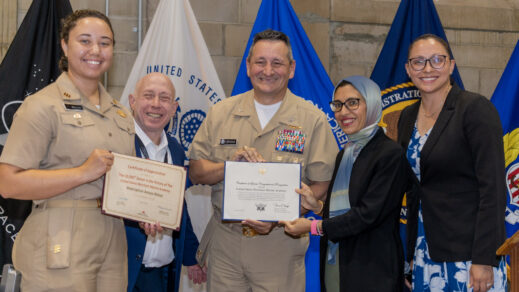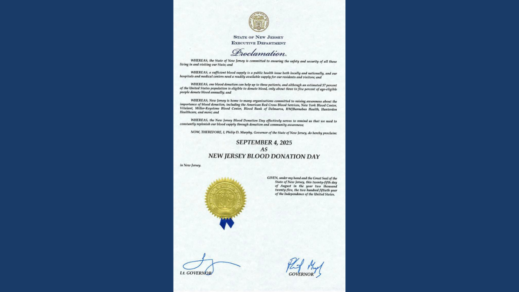Current Projects
Millions of patients suffer from either iron overload or iron deficiency worldwide. Our understanding of the molecular mechanisms underlying these disorders is still partial and the available therapeutic options scarce. This highlights the need for a deeper characterization of these conditions and the effects of iron accumulation and deprivation.
In the human body, most iron is utilized for heme synthesis and incorporation into hemoglobin, to sustain the daily production of 200 billion erythrocytes. In addition, both heme and iron are critical components of proteins and enzymes involved in mitochondrial respiration and DNA synthesis. Due to their functions, heme and iron play an important role in cellular metabolism, survival and proliferation. However, excess of free heme and iron is toxic and causes oxidative damage, resulting in cell cytotoxicity and organ failure. Because no physiological mechanism exists for active iron excretion in humans, iron absorption and recycling, as well as heme synthesis and trafficking, are tightly regulated to maintain an appropriate heme and iron balance, the alteration of which eventually leads to severe pathologic conditions.
Pathologic excess of systemic heme and iron leads to their progressive accumulation in vital organs (liver, heart, pancreas, kidney). Increasing evidence implicates non-hemopexin bound heme and non-transferrin bound iron as the causes of organ deposition and damage. Symptoms of iron overload are often limited, until organ damage occurs. When untreated, iron overload increases the risk of liver cirrhosis, heart failure, diabetes mellitus, neurodegenerative diseases and infections.
Research Focus
Our lab focuses on the detrimental impact of heme and iron on the pathogenesis of diseases hallmarked by an abnormal heme and iron metabolism. Our research investigates the molecular mechanisms of heme/iron-driven inflammation, oxidative stress and cardiovascular dysfunction, and the importance of detoxification systems that counteract heme/iron-induced toxicity. Our main scientific interest is to define the consequences of these toxic effects and their pathophysiologic relevance for inherited (hemochromatosis; sickle cell anemia, thalassemia) and acquired heme/iron-overload conditions (transfusion-dependency). Finally, we aim to investigate how iron-overloaded individuals can benefit from enhanced heme/iron detoxification through the administration of heme scavengers and iron chelators, as well as anti-oxidants and modulators of iron homeostasis.
Role of heme and iron in macrophage polarization
Reticulo-endothelial macrophages are central for the regulation of iron homeostasis, thanks to their ability to recycle hemoglobin-derived iron. Beside this role, macrophages are key innate immune cells which exhibit remarkable functional plasticity, reflected in their capacity to integrate diverse signals from the microenvironment and acquire distinct phenotypes. These two roles are interconnected: macrophage polarization dictates the expression of iron-regulated genes and determine cell iron handling. However, it is still unclear how different iron sources affect macrophage plasticity. Current research focus is to study the phenotypic switching of macrophages induced by different iron sources (e.g. free heme and iron, hemolytic or intact RBCs), taking advantage of both in vivo and in vitro model systems. Shaping macrophage phenotypes through the control of iron availability might provide a novel strategy to modulate the inflammatory response in hemolytic and iron-loaded patients.
Role of heme and iron in vascular dysfunction
In the last years, increasing evidence from animal and human studies supported a role for heme and iron in vascular diseases. Recently we have shown that both free heme and iron contribute to endothelial activation and vascular dysfunction. The lab is currently investigating the molecular mechanisms underlying iron-mediated vascular alterations and their relevance for pathologic conditions, including atherosclerosis and thrombosis. To this purpose, we analyze cohort of patients with iron-overload diseases as well as hemolytic anemias and we take advantage of mouse models of hemochromatosis and sickle cell disease for the molecular characterization of iron-induced vasculotoxicity.
Funding Support
• NIH P01 HL149626, Vinchi (ESI PI, Project 3), 07/20/2020-06/30/2025 “Macrophage Functional response in Hemolytic Complications”
• Cooley’s Anemia Foundation Research Grant, Vinchi (PI) 07/01/2022-06/30/2023
Previous Funding Support
• National Blood Foundation Early Career Research Grant, Vinchi (PI) 2019-2021
Education and Training
Postdoctoral Training
Molecular Medicine Partnership Unit; University of Heidelberg & European Molecular Biology Laboratory (EMBL), Heidelberg, Germany
Doctoral Training
PhD, Biomedical Science and Human Oncology; Molecular Biotechnology Center (MBC), University of Turin, Italy
Francesca Vinchi, PhD, Researcher Profile PDF
Honors & Prizes
• National Blood Foundation Scholar
• Tito Bastianello Young Investigator Award 2019, MDS Foundation
• Woman in Hematology 2019, European Hematology Association
• IBIS Gunshin Levy Award 2015, awarded to Young Researchers for their dedication, commitment and contributions to the field area of iron homeostasis
Editorial Roles
• Scientific Editor, HemaSphere, the Journal of the European Hematology Association
• Associate Editor, Frontiers in Oncology, Section Hematologic Malignancies
• Associate Editor, Journal of Basic and Clinical Physiology and Pharmacology
Publications
Vinchi F, Sparla R, Passos ST, Sharma R, Vance SZ, Zreid HS, Juaidi H, Manwani D, Yazdanbakhsh K, Nandi V, Silva AMN, Agarvas AR, Fibach E, Belcher JD, Vercellotti GM, Ghoti H, Muckenthaler MU. Vasculo-toxic and pro-inflammatory action of unbound haemoglobin, haem and iron in transfusion-dependent patients with haemolytic anaemias. Br J Haematol. 2021 May;193(3):637-658.
Vinchi F, Porto G, Simmelbauer A, Altamura S, Garbowski M, Silva A.M.N, Spaich S, Sparla R., Hentze MW and Muckenthaler MU. Atherosclerosis is aggravated by iron and ameliorated by dietary and pharmacological iron restriction. Eur Heart J. 2020 Jul 21;41(28):2681-2695.
Ingoglia G, Sag CM, Rex N, De Franceschi L, Vinchi F, Cimino J, Petrillo S, Wagner S, Kreitmeier K, Silengo L, Altruda F, Maier LS, Hirsch E, Ghigo A and Tolosano E. Hemopexin counteracts systolic dysfunction induced by heme-driven oxidative stress. Free Radic Biol Med, 2017 July; 108: 452-464.
Petrillo S, Chiabrando D, Genova T, Fiorito V, Ingoglia G, Vinchi F, Mussano F, Carossa S, Silengo L, Altruda F, Merlo G R, Munaron L, Tolosano E Heme accumulation in endothelial cells impairs angiogenesis by triggering paraptosis. Cell Death Diff. 2018 Mar; 25 (3): 573-588.
Tangudu NK, Alan B, Vinchi F, Wörle K, Lai D, Vettorazzi S, Leopold K, and Vujić Spasić M. Scavenging reactive oxygen species production normalizes ferroportin expression and ameliorates cellular and systemic disbalances in hemolytic mouse model. Antioxid Redox Signal. 2018 Mar 2.
Costa da Silva M, Breckwoldt MO, Vinchi F, Correia MP, Stojanovic A, Meister M, Muley T, Warth A, Platten M, Hentze MW, Cerwenka A* and Muckenthaler MU*. (*Equal contribution). Iron induces anti-tumor activity in tumor-associated amcrophages. Front Immunol. 2017 Nov 8;8; 1479
Ingoglia G, Sag CM, Rex N, De Franceschi L, Vinchi F, Cimino J, Petrillo S, Wagner S, Kreitmeier K, Silengo L, Altruda F, Maier LS, Hirsch E, Ghigo A and Tolosano E. Data demonstrating the anti-oxidant role of hemopexin in the heart. Data Brief. 2017 May 13;13:69-76.
Vinchi F*, Costa da Silva M*, Ingoglia G, Petrillo S, Brinkman N, Zuercher A, Cerwenka A, Tolosano E* and Muckenthaler M U* (*Equal contribution). Hemopexin therapy reverts heme-induced pro-inflammatory phenotypic switching of macrophages in a mouse model of sickle cell disease. Blood. 2016;127(4):473-486.
Vinchi F, Ingoglia G, Chiabrando D, Mercurio S, Turco E, Silengo L, Altruda F and Tolosano E. The Heme Exporter FLVCR1a Regulates Heme Synthesis and Degradation and Controls Activity of Cytochromes P450. Gastroenterology. 2014 May;146(5):1325-38.
Vinchi F, Muckenthaler M U., Costa Da Silva M, Balla G, Balla J and Jeney V. Atherogenesis and iron: from epidemiology to cellular level. Frontiers in Pharmacology, 2014 May 5; 5:94.
Vinchi F, De Franceschi L, Ghigo A, Townes T, Cimino J, Silengo L, Hirsch E, Altruda F and Tolosano E. Hemopexin Therapy Improves Cardiovascular Function by Preventing Heme-Induced Endothelial Toxicity in Mouse Models of Hemolytic Diseases. Circulation, 2013 Mar 26;127(12):1317-1329.
Vinchi F and Tolosano E. Therapeutic Approaches to Limit Hemolysis-Driven Endothelial Dysfunction: Scavenging Free Heme to Preserve Vasculature Homeostasis. Oxidative Medicine and Cellular Longevity, 2013;2013:396527.
Chiabrando D, Marro S, Mercurio S, Giorgi C, Petrillo S, Vinchi F, Fiorito V, Fagoonee S, Camporeale A, Turco E, Merlo GR, Silengo L, Altruda F, Pinton P, Tolosano E. The mitochondrial heme exporter FLVCR1b mediates erythroid differentiation. Journal of Clinical Investigation, 2012 Dec 3;122(12): 4569-79.
Spiller F, Costa C, Souto FO, Vinchi F, Mestriner FL, Laure HJ, Alves-Filho JC, Freitas A, Rosa JC, Ferreira, Altruda F, Hirsch E, Greene LJ, Tolosano E, Cunha FQ. Inhibition of Neutrophil migration by Hemopexin leads to increased mortality due to Sepsis in mice. American Journal of Respiratory and Critical Care Medicine, 2011 Apr 1;183(7):922-31.
Tolosano E, Fagoonee S, Morello N, Vinchi F, Fiorito V. Heme Scavenging and the other facets of Hemopexin. Antioxid Redox Signal., 2010 Feb;12(2):305-20.
Vinchi F, Gastaldi S, Silengo L, Altruda F and Tolosano E. Hemopexin prevents Endothelial Damage and Liver Congestion in a model of Heme Overload in mice. American Journal of Pathology, 2008 Jul;173(1):289-99.
Chiabrando D, Vinchi F, Fiorito V and Tolosano E. Haptoglobin and Hemopexin in Heme Detoxification and Heme Iron Recycling. Acute Phase Protein/Book 1, INTECH, 2011.



